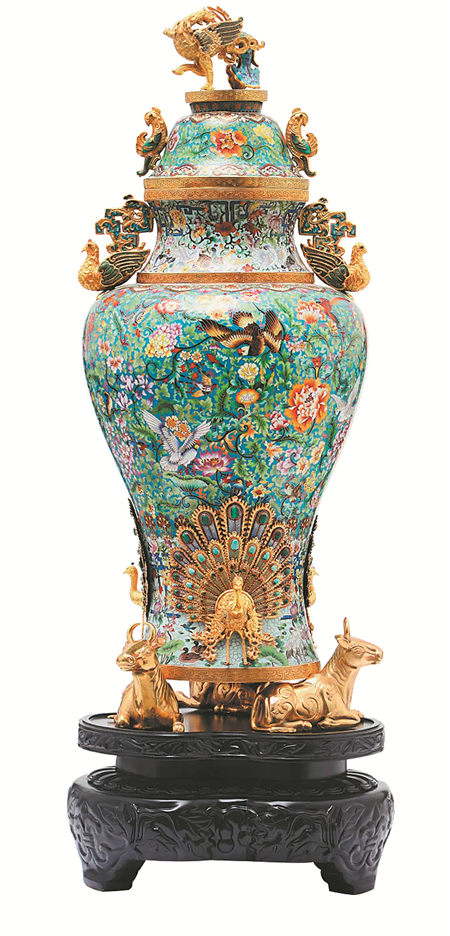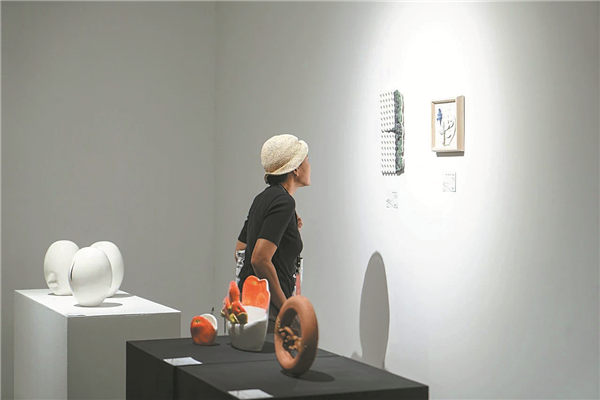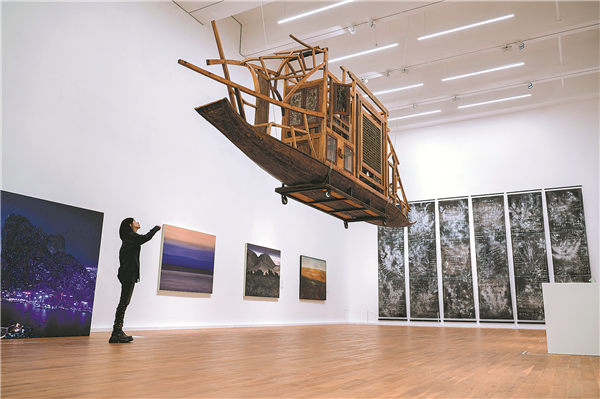

Art of jingtailan
Emperor Jingtai of the Ming Dynasty (1368-1644) had a short-lived reign. He ascended to the throne after his brother, Emperor Zhengtong, was captured in battles against a Mongol tribe, but a few years later was disposed of by Zhengtong and his supporters. Two days after he was overthrown, Jingtai died at the age of 30.
Today, jingtai is more familiar to people as part of the term jingtailan, which refers to a type of Chinese cloisonne enamelware of which the complicated technique — combining painting, firing, embedding and smelting — achieved maturity during the reign of Jingtai, and has been passed on as an item of cultural heritage.
The Chinese Traditional Cultural Museum is displaying dozens of such objects by Zhong Liansheng, a veteran artisan in the field, and his pupils until July 16.
Zhong has been a craftsman in the world of cloisonne enamelware for some 46 years, pushing this unique form of artistry and workmanship to a new level. His works are not only aesthetically pleasing to everyday people but also have been presented as State gifts at international events.
9 am-5 pm, closed on Mondays.16 Hujing East Road, Chaoyang district, Beijing.010-87991766/1866.

Ceramics collaboration
Walk with the Light is a ceramics exhibition now showing in Jingdezhen, Jiangxi province. The exhibition brings together artists from different countries and cultural backgrounds as a shared language of expression.
It teams artists who live and work in Jingdezhen, a centuries-old hub of ceramic production and the former home to imperial kilns, who seek to bring modern renewal to Jingdezhen's traditions through their work with local workshops that have inherited the technique for generations.
The exhibition also features artists who had a brief working residence in Taoxichuan, a former ceramics factory that is now an art exhibition center with residence programs and other cultural activities.
It shows how these artists have integrated their respective experiences and cultural backgrounds with the history of Jingdezhen and its vibrant life.
It is a show to inspire discussions on the creation of ceramics as part of the contemporary art scene. The exhibition is held at the Qiumo Art Gallery until July 30.
9 am-9 pm, closed on Mondays. Ceramic Art Avenue, Taoxichuan, 150 Xinchang Xi Lu, Zhushan district, Jingdezhen, Jiangxi province.

New campus gallery
The Chinese University of Hong Kong, Shenzhen, Guangdong province, marks its 10th anniversary with the opening of a second art space on campus, five years after its University Arts Centre opened. The new gallery was inaugurated with the exhibition Where Mountains Meet the Sea, which reviews the history of exchanges of human society, trekking mountains along the waters, and sailing through the ocean, anticipating a future even more open and inclusive.
The exhibition, running at the Gravity Field Art Gallery until Sept 23, brings paintings, installations, image works and performance art by 14 artists whose works have blurred the boundaries between tradition and modernity and combined the expressions of China and the West.
10 am-5:30 pm, Monday to Friday. Teaching Complex D101, The Chinese University of Hong Kong, Shenzhen, 2001 Longxiang Boulevard, Longgang district, Shenzhen, Guangdong province.